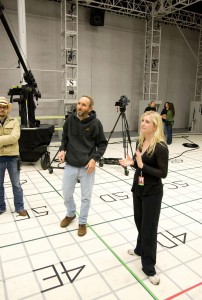In A Christmas Carol, featuring Jim Carrey as Ebenezer Scrooge and the three ghosts that haunt him, director Robert Zemeckis relied on the newly formed ImageMovers Digital to bring this performance capture adaptation of Charles Dickens’ novel to life. fxguide speaks with visual effects supervisor George Murphy and animation supervisor Jenn Emberly about making the performances possible.
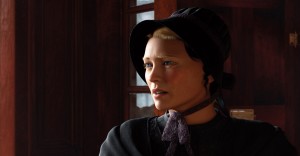
fxg: What I really noticed in this film was such a wide range of subtly acted scenes and major dramatic sequences. How did you establish a system that let you achieve that?
Murphy: Personally, I started calling this type of filmmaking ‘digital live action’ as opposed to just animation or effects or some other thing. It incorporates all of the most difficult things from those disciplines. It really is about getting the actor into the digital realm and our ability to get all of the little subtle things going on with the capture. We couldn’t rely on technology alone to do that. It obviously also comes from the actor. And while we’re being faithful to the actor’s performance, we had to set up this whole pipeline to allow us to translate that from the actor to the character.
From the cinematography side of things, while it’s very much a process based on the director working with the actors, and then shooting it in a very cinematic way, the whole point of the medium is to isolate those things you can’t control in a live action film. Every performance is captured in close-up, essentially, and you can take that, let the actors go home, and then work on shooting the movie after the fact so the actor will hit their mark every time on cue and really design and craft your cinematography, even with a straightforward dialogue scene.
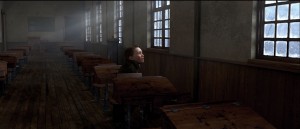
fxg: How do you think the technology that was available impacted on telling such a well-known story?
Emberly: With Zemeckis, he comes from a live action background, which is coupled with such a fabulous imagination. So I think what he was trying to do was tell these stories that had really close-up moments on his characters. He was also able to play with his designs. For Scrooge, he was able to have a little bit of the actor in there and also have a character that was true to the book.
That’s where the performance capture is a great tool for him. He can get all those subtleties and nuances that Jim Carrey provided and anything extra he could add on top of that down the line in animation. He could pull out parts of a performance to have it pop on screen at times or stay with the performance that Jim gave. It allows Zemeckis to be really creative and organic anywhere on the line – on stage, in animation, through the cinematography. I think that’s why it’s such a great new art form for him.
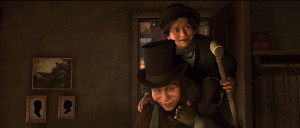
fxg: What were some of the major technical challenges?
Murphy: The fundamental challenge was we had to build a whole studio from scratch underneath Carol. We were really going back to inventing pencils and quickly coming up to speed and creating a very sophisticated film. One of the things we obviously did was to look at what were the stumbling blocks of the previous films and what had been the challenges for our peers. We kept coming up with the fact that everyone runs out of time with the creative because they’re stuck dealing with managing all of this data.
So that was one of the things that pushed us to create this head-cam technology where we could isolate the facial performance animation separately from the body capture and allow us to break those into different types of problems that could be dissected and gotten to much faster. It gave us the freedom to have multiple characters in the room that would have previously made mo-cap technicians tremble. I think at one point we peaked at 12 or 13 actors going simultaneously, producing tremendous amounts of data. We didn’t want to take a year to process all of that.

I think previous head-cam devices were more something like dental appliances. Zemeckis was adamant that he didn’t want anything to get in the way of the actors’ performances. We had two weeks from seeing a mock-up prototype to when we had to have a working proto-type. There was also a lot of work in making sure we could record all that data and then building in animation controls for it down the line.
Our first shots in the pipeline were lit literally by typing code into scripts. We had to work our way through the 80s and 90s and then the 2000s to bring our lighting tools up to speed. Then it was a mix of proprietary technology and off-the-shelf tools to model, animate and light the characters and scenes. It took us maybe a year to get the first shot finalled, but by the end we were able to get shots out in as little as four days.
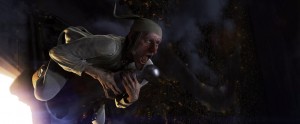
fxg: Jenn, how did your previous visual effects and animation work prepare you for work on Carol?
Emberly: I did a lot of time at ILM in visual effects. The big difference at ImageMovers is that we were working very closely with the director on the story as it evolved with the characters. In visual effects you tend to work on bits and pieces of shows and you don’t tend to get that holistic storytelling experience like you do here. I felt that that was a very powerful contributor to putting Scrooge on screen, and having that inspiration from the director. We’d review with Zemeckis one or two times a week. The whole crew got to hear his feedback firsthand which was very exciting for everyone. I think that was the biggest change for me, coming from visual effects.
fxg: One of my favourite shots from the film is of Scrooge walking down the road towards his front gate. It’s very subtle and to me feels very real. What would be one of your standout shots?
Murphy: That particular shot you mention was a seemingly straightforward shot, but actually what became complex about it was what you can’t do in live action and that’s cheat the difference between what’s lighting the subject and how they’re shadowing. That shot was all about the shadow on the wall as he’s walking down the sidewalk. One of things that was unique about the whole film was that, rather than a traditional effects film where you go in and work with the DP doing a first unit shoot and then shots get put into effects-land, our DP was involved in the entire process. He’s actually part of our lighting team.
So we could really talk about set-ups – how would he shoot this on a stage or on location, what are we looking for in terms of light quality et cetera. The reciprocal part of that was that in the computer we could work out which parts to disconnect from the physics of the scene so that we can shoot it more easily than we can on a stage and manipulate that to make a story point or give something more dramatic effect.
One of my favourite sequences involves the Ghost of Christmas Past. You’ve got a really quirky character, you’ve got Jim Carrey playing against himself, so you’ve got performances coming from a couple of different places. In that process, the performance capture was only the starting point. When we got to the layout of the shot, there were differences in scale between the characters and the performances had to integrate together in a way that you couldn’t do with real actors using greenscreen or optical effects traditionally. We had to make them live in the same space. One of the things we had to always pay attention to was that we couldn’t just shoot straight – the characters had to have a spatial relationship with each other. You had to address the interaction between the characters. And that went for the whole look of the film – we didn’t want it to look photo-real but we wanted it to be very physical.
Emberly: I really liked the scene where Scrooge is sitting on the stairs and Cratchit is mourning his child and walks up the stairs through Scrooge. There’s a moment where they’re almost looking at each other but Cratchit doesn’t realise Scrooge is there. It was an interesting scene to do because we really had to play around with the relationship of where they were together, relative to the camera and in context with the lighting. It was a very moody scene and all of that played on how the characters were feeling emotionally. We did a lot of looking at references, thinking about what were those very small movements the actors were doing that made it so powerful.
It really was just headshots. There wasn’t a whole lot of physical body performance. It was all about the face and just going back and looking at why did Jim’s performance resonate so strongly and how can we get that on Scrooge. The animators spent a lot of time going to that level of detail and I think the result is very beautiful and powerful.
